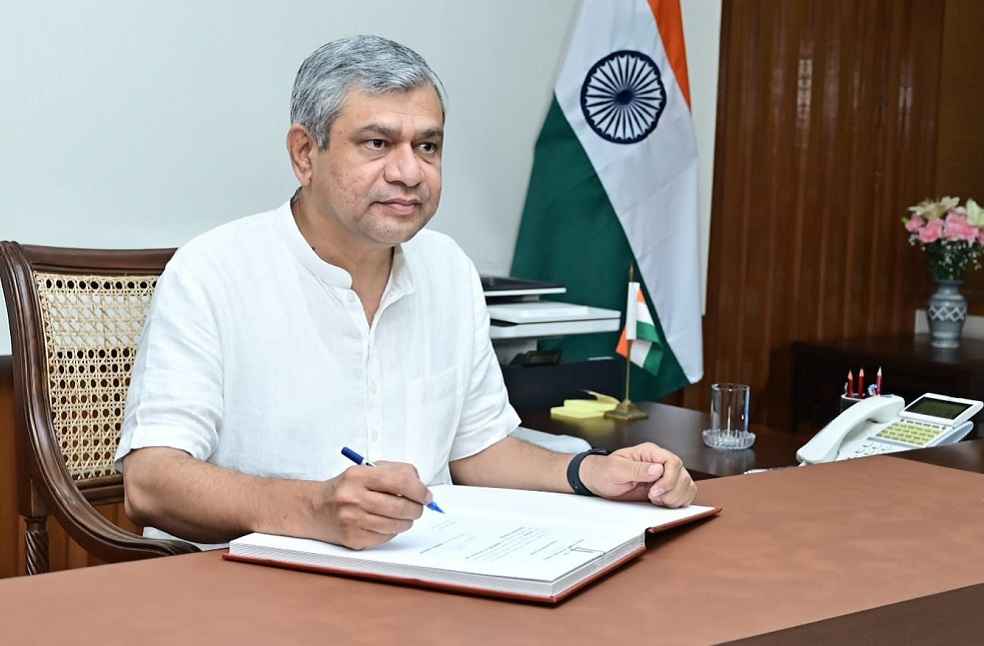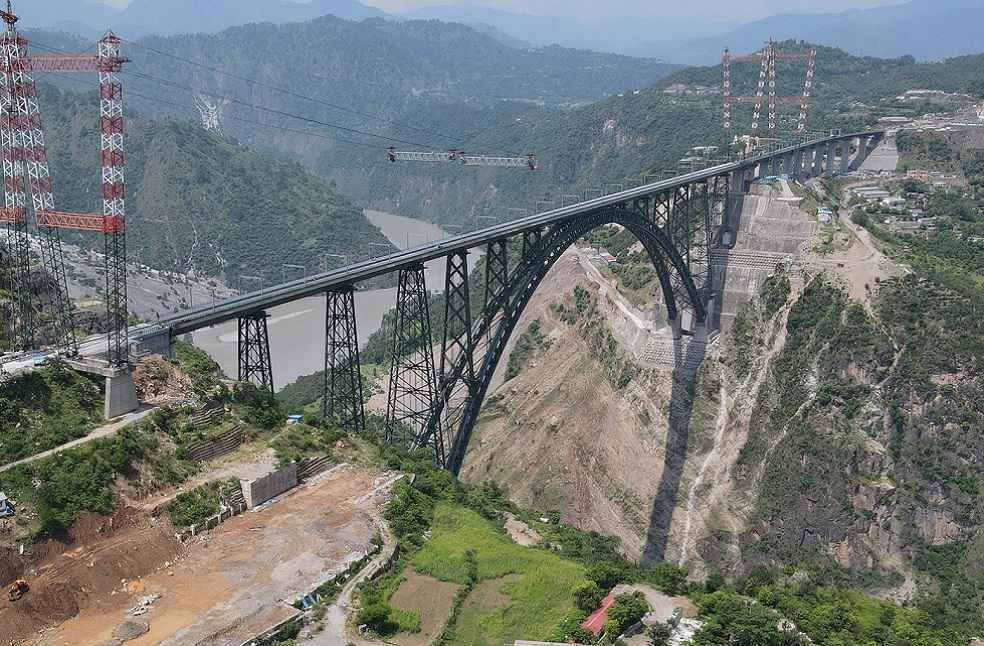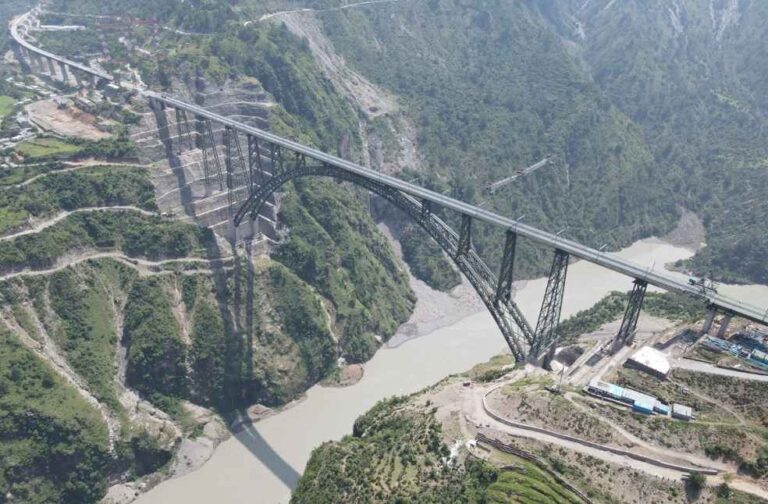New Delhi: The world’s highest railway arch bridge, taller than the Eiffel Tower, over the Chenab River in India, has successfully undergone a trial run. Constructed between Sangaldan and Reasi in the Ramban district of Jammu and Kashmir, the bridge is expected to commence rail traffic soon, according to railway officials.
Photos and videos of the successful trial run, featuring a MEMU train, were shared on social media by India’s Railway Minister Ashwini Vaishnaw. The Chenab bridge, part of the Udhampur-Srinagar-Baramulla Rail Link (USBRL) project, is an engineering marvel that directly connects the Kashmir Valley with India’s railway network.
The Udhampur-Srinagar-Baramulla rail link is one of the most challenging projects in Indian Railways’ history. The project, costing €3.2 billion, includes the construction of 38 tunnels spanning 119 kilometres and 927 bridges with a combined length of 13 kilometres. Among these, the 12.75-kilometre-long tunnel is India’s longest.

The Chenab bridge, towering 359 metres above the river and spanning 1.3 kilometres, features an arch 467 metres in height. Built from concrete and steel, it stands 35 metres taller than the Eiffel Tower and connects the crucial 111-kilometre route between Katra and Banihal. Constructed by Mumbai-based Afcons, the bridge used 28,660 metric tonnes of steel and is designed to withstand winds of up to 266 km/h, earthquakes up to 8 on the Richter scale, and potential explosions.
Expected to reduce travel time between Baramulla, Srinagar, and Jammu by about seven hours, the bridge also features technology to adjust train speeds based on wind conditions. Construction of the bridge began in November 2017 with a budget of €140 million and was completed in August 2022.
In addition to serving as a vital transport link, the Chenab bridge is set to become a major tourist attraction. Located in the Reasi district of Jammu and Kashmir, the bridge offers stunning views of the unique landscape, attracting visitors eager to experience the beauty of the Kashmir Valley via rail. The region already draws thousands of tourists annually to sites such as Shiv Khori, Salal Dam, Bhimgarh Fort, and the Vaishno Devi Temple. With the opening of the Chenab bridge, it is expected to become another popular destination.
A Monumental Project
The Jammu-Baramulla railway line, a 338 km track under the Firozpur railway division, is a monumental project aimed at connecting the Kashmir Valley with the rest of India. The Udhampur-Srinagar-Baramulla Rail Link (USBRL) section, a crucial part of this project, includes the world’s tallest railway bridge, the Chenab Bridge.
Major Timeline

- 1994: Initial proposal for a rail line from Qazigund to Baramulla within the Kashmir Valley.
- 2002: Declared a National Project, focusing on an unbroken rail link from Udhampur to Baramulla.
- 2004: Opening of the Jammu-Udhampur section.
- 2008: Challenges arose due to geological instability, leading to route revisions.
- 2009: Anantnag-Baramulla section completed, but remained disconnected from the national network.
- 2013: Pir Panjal Railway Tunnel and Banihal station opened, enabling northward travel from Banihal.
- 2014: Udhampur-Katra line opened, connecting Katra to the rest of India.
- 2021: The main arch of the Chenab Bridge completed.
- February 2024: Banihal-Sangaldan section inaugurated, introducing the first electric train in the Kashmir Valley and opening India’s longest transport tunnel.
Current Status
The project is nearing completion, with the remaining Katra-Banihal section expected to be finished by December 2024. Upon completion, the entire 272 km Udhampur-Srinagar-Baramulla line will be operational, significantly improving connectivity and transforming transportation in the region.
HEALTH | Microplastics found in all human semen samples; Study



